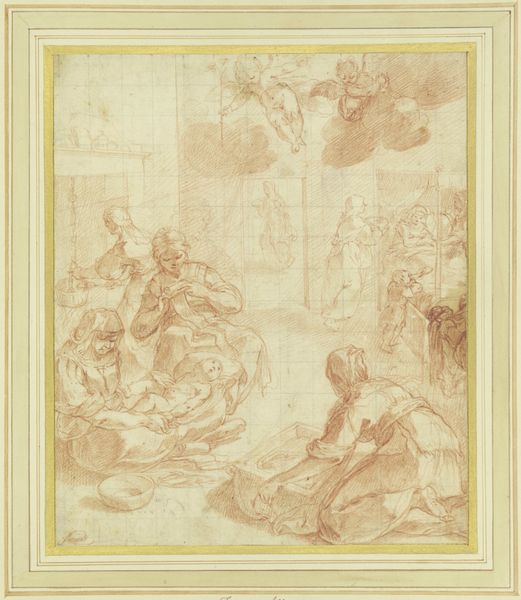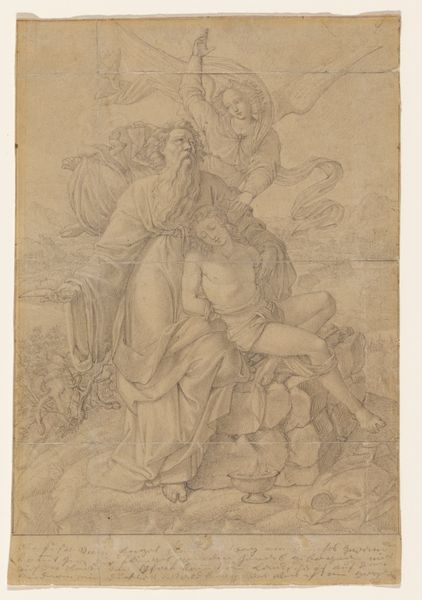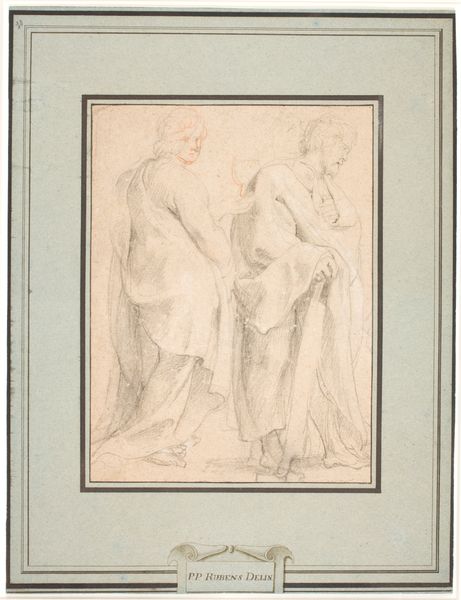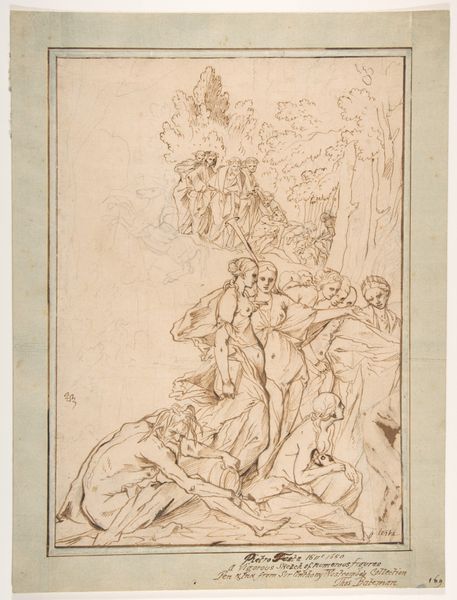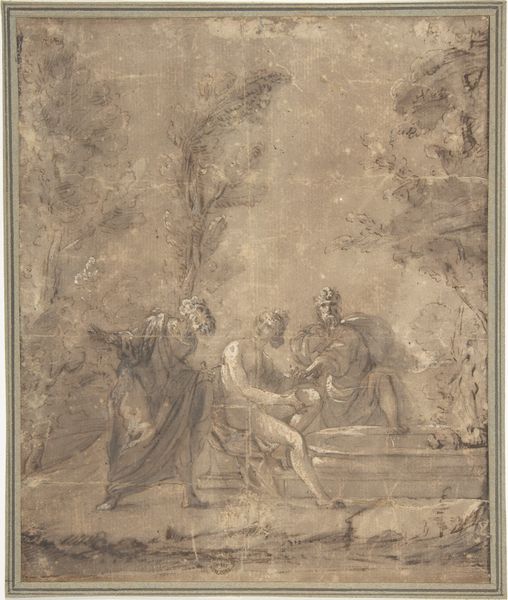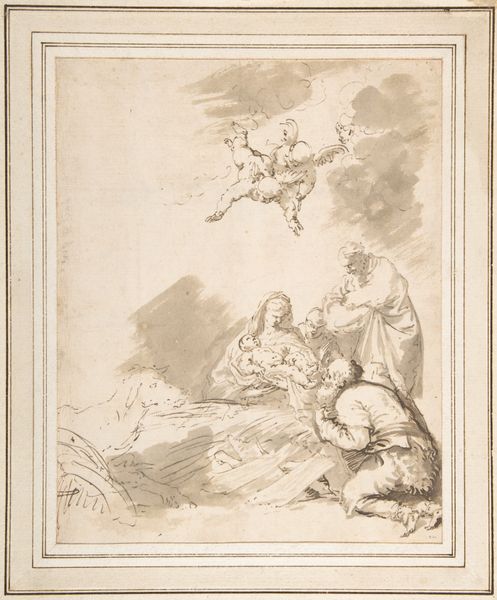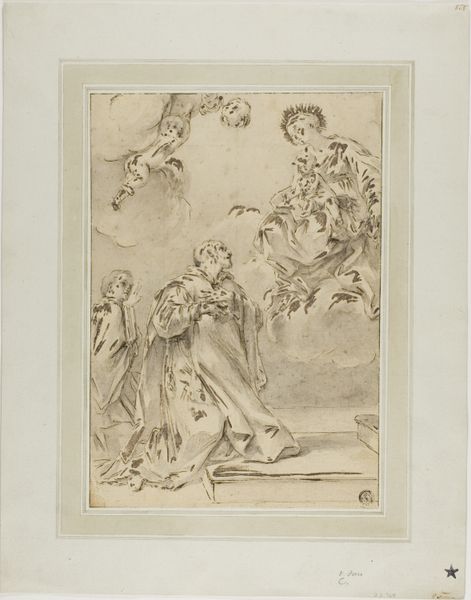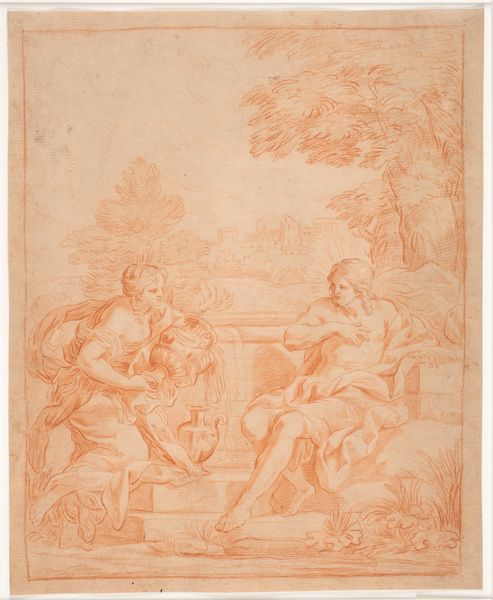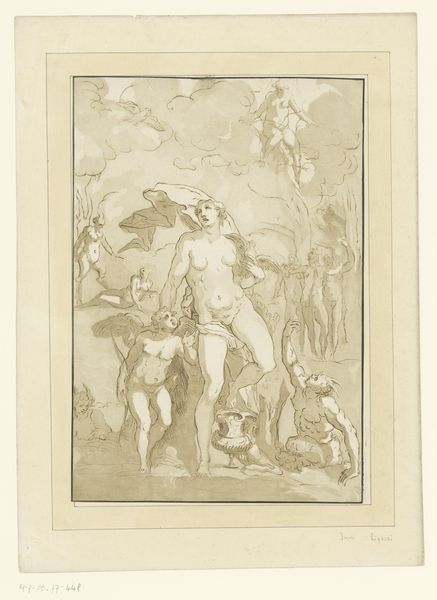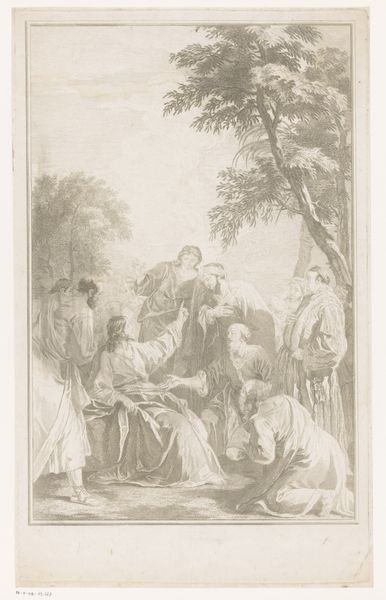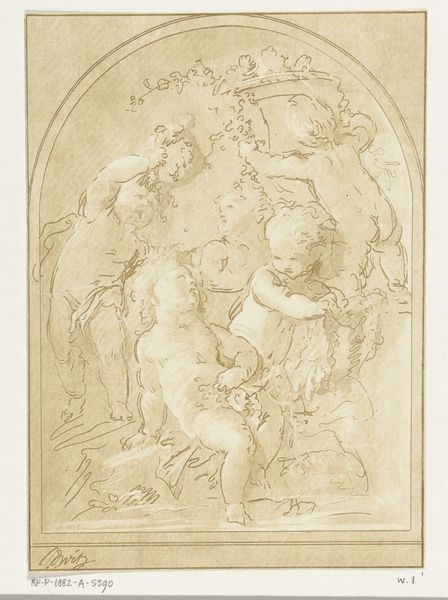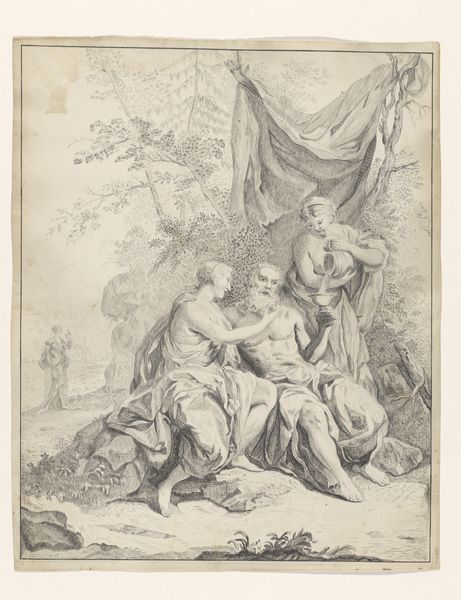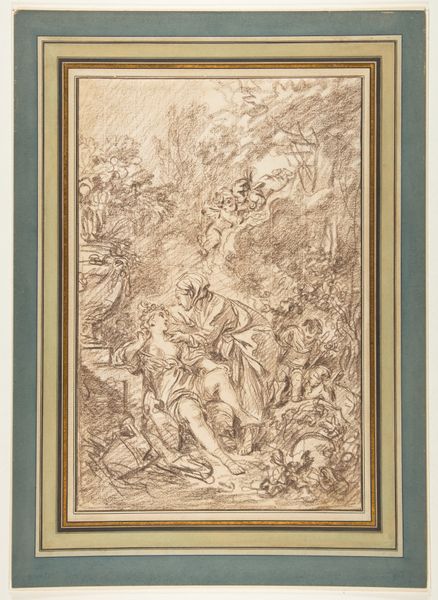
Elijah Visited by an Angel in the Wilderness (I Kings 19:4-8) 18th century
0:00
0:00
drawing, print, pencil, charcoal
#
drawing
#
baroque
# print
#
pencil sketch
#
landscape
#
charcoal drawing
#
figuration
#
11_renaissance
#
pencil
#
charcoal
#
history-painting
Dimensions: 15 1/4 x 9 15/16 in. (38.8 x 25.2 cm)
Copyright: Public Domain
Curator: Let's turn our attention to an 18th-century drawing by Jean-Baptiste Bénard, currently residing here at the Met. It's titled "Elijah Visited by an Angel in the Wilderness (I Kings 19:4-8)." It seems to be rendered in pencil and charcoal. Editor: My immediate impression is one of subdued serenity. The tonal range is delicate, almost whispered, and despite the dramatic subject matter, the composition evokes a sense of quietude. Curator: Bénard skillfully uses the media to create that atmosphere, doesn't he? Think about the texture of the paper itself, likely laid, its tooth catching the charcoal to produce subtle variations. The pressure he exerted on the pencil contributes to the overall soft, ethereal feel. Editor: I’m also struck by the interplay between light and shadow. The angel radiates a gentle luminescence, contrasting with the earthier tones surrounding Elijah. This chiaroscuro isn't just aesthetic, it imbues the figures with a sense of the divine interrupting the mundane. Look at the fall of drapery and musculature, realized purely through hatching and tone! Curator: Absolutely, and considering its probable purpose – preparatory work, perhaps for a larger history painting – we see how it sheds light on workshop practices and divisions of labor during the Baroque period. Who was responsible for what within the larger artistic project, from apprentices preparing pigments to the master executing the final piece? Editor: That focus also extends beyond just the act of its creation to what this imagery meant, say, politically, for example. Note how Bénard adheres to formal conventions. This drawing isn't simply an act of religious devotion, but a very consciously crafted artifact, embedding established symbolic meanings. Curator: Indeed. It’s a testament to the enduring power of visual storytelling, how a narrative, in this case a religious one, could be effectively disseminated, consumed, and interpreted within a specific historical context. And this drawing shows how this Biblical narrative circulated among diverse classes in Baroque society, too. Editor: For me, the true power lies in Bénard's understanding of form. We get an effective composition which enables symbolic impact in the religious and historical subject matter. Curator: Very well, thank you. Editor: You’re welcome, thank you too.
Comments
No comments
Be the first to comment and join the conversation on the ultimate creative platform.
